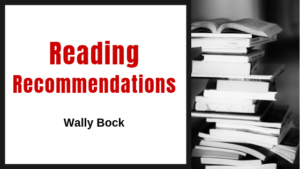For a long time, we didn’t have to worry about business book “classics” because there just weren’t that many business books. Today gazillions of business books are published every year. Some are great, others are horrid, and the vast majority are mediocre. It’s the bell curve at work.
That’s why it’s worth going back to some high-quality business classics. I call a business book a classic if it was first published more than twenty-five years ago and is still worth reading.
Before there was VUCA or the gig economy there was The Age of Unreason. Before we discussed working from home or work life balance, Charles Handy was describing a “portfolio” approach to life.
In 1989, Charles Handy looked at where we were and where we might go. He observed that we were living through a period of discontinuous change. He called it The Age of Unreason. That sounds like a phrase coined yesterday instead of 30 years ago. The book he wrote about it is still outselling many more recent books about business and society.
The Age of Unreason is divided into three parts. Part one is about change, specifically the kind of change that surrounds us today. Part two is about working and how organizations and careers are changing. Part three is about life in the present/future.
Changing
The change that is so disconcerting is “discontinuous change.” There are changes all around us, but they don’t appear connected. Instead, we deal with one change and, before we can take a deep breath, a different change claims our attention. We don’t see many changes coming. Instead, we’re often surprised and caught off balance.
Handy says the way to deal with this continuous change is to use what he calls, “upside down thinking.” Upside down thinking is thinking that examines our assumptions and preconceptions. Handy says that it “invites one to consider the unlikely if not the absurd.”
Education is the most powerful tool we have to deal with discontinuous change. Handy writes about education in the broadest sense. It includes seeking learning experiences, reflecting on experience, and learning to live with failure and mistakes.
Working
The section on working is mostly about different forms of organization. The “Shamrock Organization” is a core of essential workers surrounded and supported by outside contractors and part time help. The “Federal Organization” has a center that coordinates the efforts of individual autonomous organizational units. The “Three I Organization” is based on information, intelligence, and ideas.
Living
The section on living is about how we work as individuals. Handy discusses why working from home makes sense for individuals and for society. He introduces the concept of a portfolio of kinds of work. There is wage and salary work which includes all the ways we trade work for money. One subset is “fee work.” Other kinds of work are “Homework,” “Gift Work,” and “Study Work.”
In a Nutshell
Charles Handy wrote The Age of Unreason when we were just beginning to sense great changes that are still taking place. When you read the book today, in the 2020s, you’ll discover how that change looked thirty years ago. You’ll also enrich your understand of changes, great and small, and your ability to understand and cope with them.
Now it’s your turn
What books would you nominate as business book classics?
What books would you suggest as companion reads to The Age of Unreason?
Companion Reads
The Age of Discontinuity by Peter Drucker
Surfing the Edge of Chaos by Richard Pascale, Mark Milleman, and Linda Gioja



There are no comments yet, why not be the first to leave a comment?